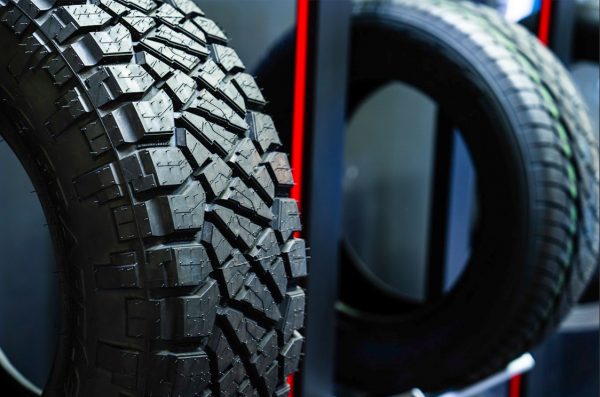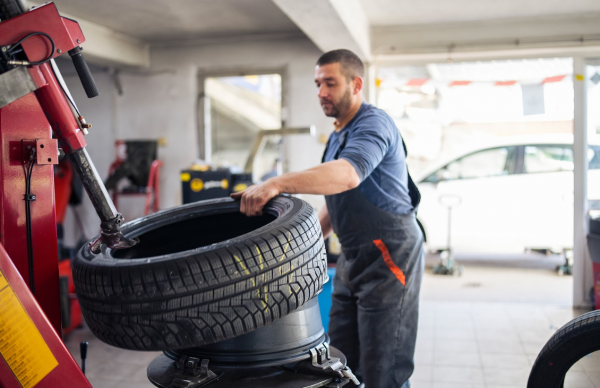
Photo: Winter tires for summer holidays (Getty Images) Author: Konstantin Shirokun
Manufacturers, experienced drivers, and dozens of automotive experts readily speak out about the need for two seasonal sets of tires and how to choose them. But there is also a downside to seasonal tire changes – the hassle of storing rubber…
Read about where and how to store a spare set of car tires in the RBC-Ukraine article.
Experienced motorists know that changing tires is only half of the procedure for seasonal change of tires. The second stage is manipulations with dismantled wheels, heavy and not always clean, which must be loaded into the car, taken somewhere and put there to rest for the next six months. Moreover, it is important not only the place where four wheels will find shelter, but also the conditions that will reign in that place.
We will talk about this below, but first we will note that, by and large, the storage conditions for summer and winter tires are the same, so we will actually talk about both types.
What happens if you store tires incorrectly
The topic of storage is important primarily because during a multi-month rest period, modern car tires can age even more than during operation on the car.
This is what happens to tires when they wait for their season to begin in unsuitable conditions – somewhere in the attic, on the balcony or, say, in the garden under a cherry tree and under a pile of heavy junk:
- The rubber the tire is made of will age – it will crack, harden, and become unstable to abrasion;
- The metal-cord frame of the tire will be deformed and it will actually become out of round;
- The metal cord of the frame will rust (in places where the rubber is damaged).
On the other hand, if the correct conditions are observed, the tire loses almost nothing in storage – at least compared to the period of operation on the road. And in case of non-compliance with the standards, catastrophic consequences will not necessarily occur immediately – this depends on the condition of the tires, their mileage and existing damage.

Dry, damp, hot, cold
Regardless of the type of season, high temperatures are undesirable for tires, because it is from them that the rubber compound loses its elasticity. Therefore, you should not arrange a tire warehouse where it is very hot – on a balcony, in an attic or in a metal garage, which heats up in the sun in the summer. Severe frost is also undesirable, because, as tire engineers say, it dries out the rubber. Direct sunlight, or rather its ultraviolet component, is 100% lethal for rubber, so if the tires are stored on the balcony, cover them from the sun.
The room where the tires are stored should be more or less dry. The danger is that in a humid atmosphere invisible corrosion of the metal threads of the tire frame may begin. First of all, tires with damaged upper layers of rubber are vulnerable to moisture – through them moisture gets to the elements of the frame.
Ideal place to store tires
We won’t take it upon ourselves to talk about the ideal, but in general, from the point of view of temperature and atmospheric conditions, a good option for storing tires could be as follows:
- The basement of a house or garage, which must have effective ventilation;
- The basement of a house or outbuilding;
- A garage inspection pit that is well ventilated through loose covers;
- A capital garage, but one that doesn’t get too hot in the summer and doesn’t freeze completely in the winter.
Lying down or standing
Often, too much attention is paid to the placement of tires during storage – they say that the tire must necessarily stand, or hang, or lie inflated, etc. But in reality, a car tire is strong enough (it holds a quarter of the car's weight) to not be capricious about storage conditions.

The only thing that really shouldn't be done is to stack tires without disks in a pyramid more than four pieces high. This type of load is not typical for passenger car tires, and the lower specimens risk losing the geometry of the metal cord and tread breaker due to excessive pressure: the sidewalls flatten, the rings on the sides in the landing area come closer together. This will entail several problems at once. It is clear that multi-story stacking is not a problem for tires on disks.
So one of the acceptable ways to place tires, no matter whether on disks or without them, is standing on racks. Another good option is to hang the wheel by the holes in the disk on a nail driven into the wall. Actually, a “naked” tire will also successfully hang on the wall in this way.
In brief
Once you have found a place to store your tires, praise yourself for your housekeeping skills and take the next step in the same direction – make sure that the removed tires are sent on vacation in perfect order, so that in six months, for the next season, you will have wheels ready for use. That is, check the tires for cuts and nails, the condition and depth of the tread and free it from stones. If your second set of tires is stored on their own disks, before going on vacation it is advisable to wash these wheels, check for leaks and balance.
Materials from Rosava and Michelin were used in preparing this article.
Let us recall that RBC-Ukraine recently reported why wheel balancing is critically important for your car.
